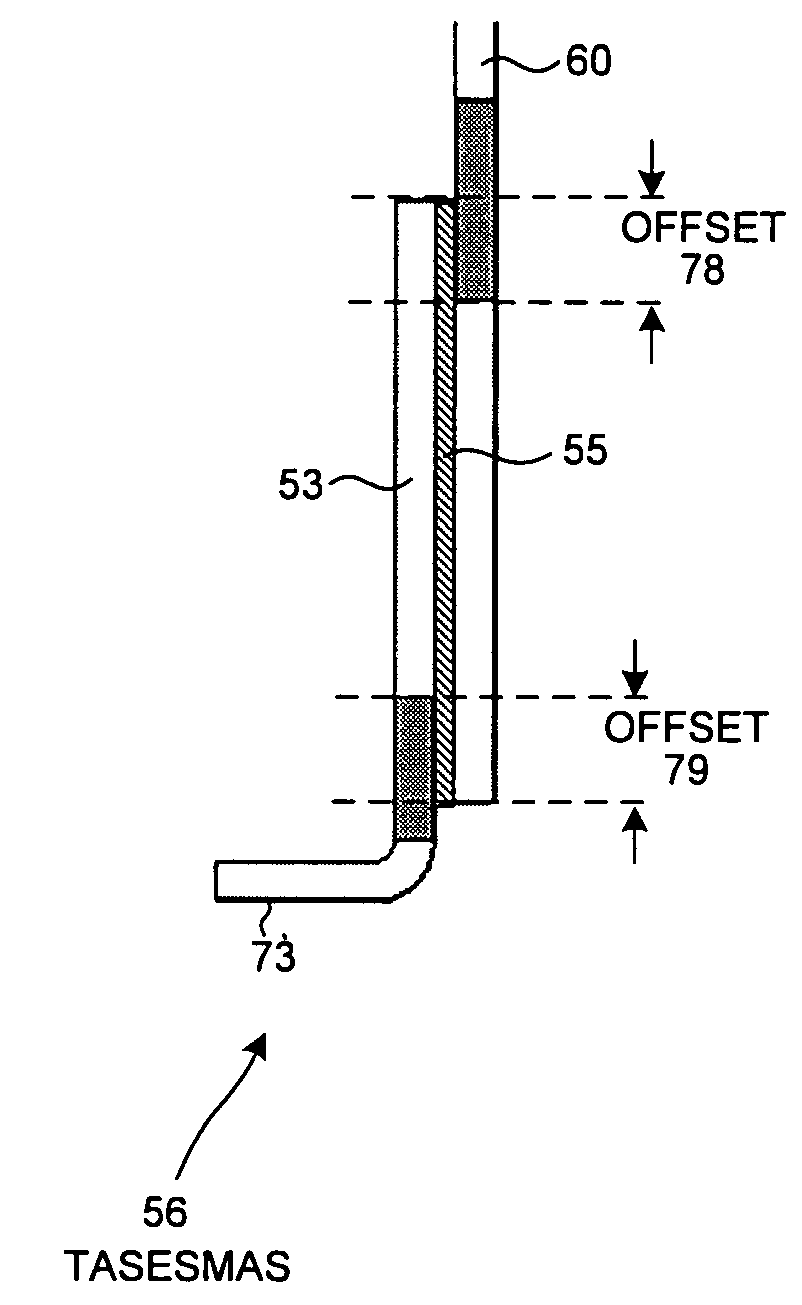Temperature-activated self-extending surface mount attachment structures
a self-expanding, surface mount technology, applied in the direction of fixed connections, sustainable manufacturing/processing, final product manufacturing, etc., can solve the problems of uneven planarity of the bottom of the connector and the upper surface of the printed circuit board, and achieve the effect of reducing or avoiding the problem of conventional solder bridging
- Summary
- Abstract
- Description
- Claims
- Application Information
AI Technical Summary
Benefits of technology
Problems solved by technology
Method used
Image
Examples
Embodiment Construction
[0046]FIG. 6 is a cross-sectional diagram of an electrical connector 50 in accordance with one novel aspect. Connector 50 includes a connector body portion 51 and a plurality of temperature-activated self-extending surface mount attachment structures (TASESMAS). Each TASESMAS includes a self-adjusting surface mount attachment structure and an amount of a low melting-temperature metal. In the illustrated example, each self-adjusting surface mount attachment structure is an L-shaped strip of stamped metal. In the orientation of the illustration of FIG. 6, the bottom horizontally extending end portion of each strip is referred to as a “solder tail”.
[0047]FIG. 7 is an expanded view of a portion 52 of the structure of FIG. 6. Portion 52 includes two L-shaped self-adjusting surface mount attachment structures 53 and 54. The darker layer 55 of material is the amount of low melting-temperature metal (for example, solder) that along with self-adjusting surface mount attachment structure 53 f...
PUM
| Property | Measurement | Unit |
|---|---|---|
| length | aaaaa | aaaaa |
| thick | aaaaa | aaaaa |
| thick | aaaaa | aaaaa |
Abstract
Description
Claims
Application Information
 Login to View More
Login to View More - R&D
- Intellectual Property
- Life Sciences
- Materials
- Tech Scout
- Unparalleled Data Quality
- Higher Quality Content
- 60% Fewer Hallucinations
Browse by: Latest US Patents, China's latest patents, Technical Efficacy Thesaurus, Application Domain, Technology Topic, Popular Technical Reports.
© 2025 PatSnap. All rights reserved.Legal|Privacy policy|Modern Slavery Act Transparency Statement|Sitemap|About US| Contact US: help@patsnap.com



